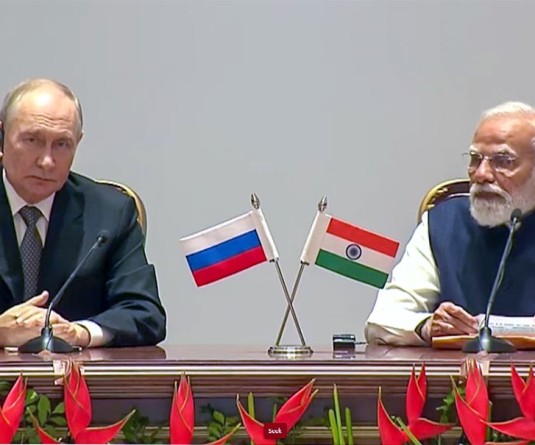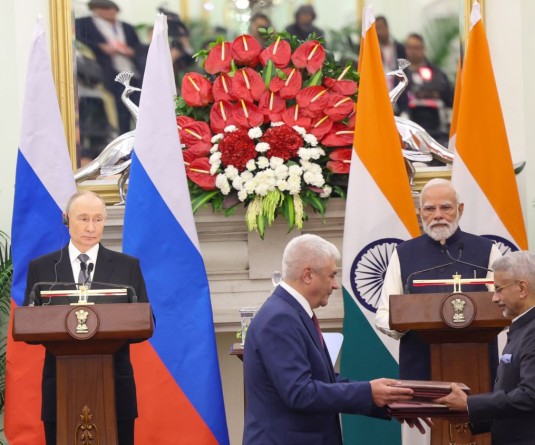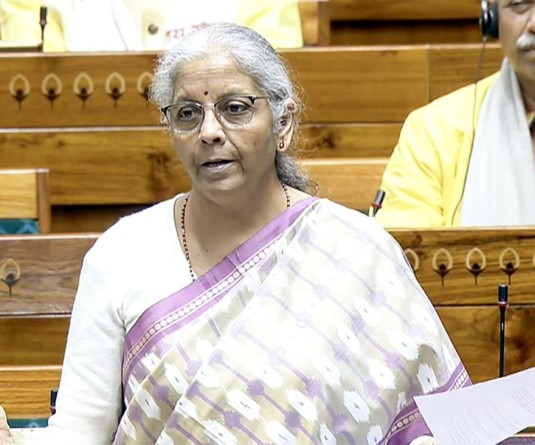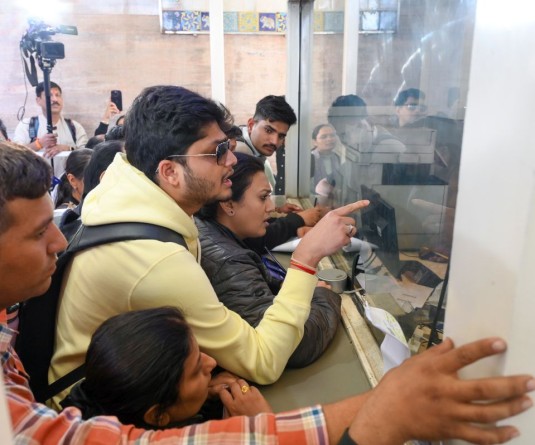
New Delhi, January 25 (Agencies): Census 2011 will be the most inclusive headcount, taking special care to count segments of the population that have traditionally returned low data - women, elderly, the disabled and infants. “Inclusion is the focus of this Census,” says C Chandramouli, Registrar General and Census Commissioner of India. So the enumerator will not just ask for details of the male member or the head of the family and assume it is the same for everyone in the household, but ask the same questions of everyone in the house.
Between February 9 and 28, 2.5 million enumerators will fan out across the country to carry out Phase II of the Census or what is called the population enumeration stage. “This is the actual Census, the headcount that will give us the socio-economic demographic profile of the country,” says Chandramouli. This is when every resident of the country will be approached for details of his or her age, religion, literacy status, etc. Special modules have been prepared and training programmes organised for the enumerators to help them ask the right questions. Besides disability, gender sensitivity is one of the key focus areas. “Every question in the Household Schedule has been framed keeping these two issues in mind,” says Varsha Joshi, Director of Census Operations, Delhi.
Based on the 2001 Census, there are 262 gender-critical districts in the country. These are districts with low sex ratio (less than 900), low female work participation rates (less than 20 per cent) and low female literacy (30 per cent or less). Seventy-eight of these districts are in UP, MP and Chhattisgarh. Enumerators have been told to ask about every member in the household. So, for instance, to the question on mother tongue, if the man of the house says he speaks Bengali, the enumerator will have to ask the same question about his wife, without assuming she speaks the same language. The same applies to the question on religion.
Questions 1 and 2 of the Schedule ask for the ‘head of the household’. “Enumerators must realise that women can also be heads of households - it’s the person who is ‘recognised’ as the head of the household. Gender sensitivity is the attitude with which the enumerator will have to knock on the door. Even if it is the male member who chooses to answer on behalf of the women, they will have to ask about each of them separately,” says Joshi. But what Census 2011 will leave out are children born to unwed mothers. That’s because the ‘fertility questions’ - number of surviving children, total children born, and children born alive during the last one year- are to be asked only of married women. So in her response to Q 5, if a woman says she is unmarried, she will not be asked for particulars of her children.
Doesn’t that make the Census less attuned to the times than it claims to be? No, says Chandramouli. “The issue was discussed and after much thought, it was decided that current cultural sensitivities wouldn’t allow for that question to be asked. It’s a question enumerators have found difficult to ask - ‘Are there unwed girls in your house who have children?’. Statistically at least, it is an insignificant data.” India has held Censuses uninterruptedly since 1872. And like each one of those 14 exercises, Census 2011 has had its own set of challenges - of scale and logistics. “Right from procuring paper and sending out schedules to 17,000 localities across the country, the challenges are immense. In Kalimpong, Darjeeling, some of our trucks went into a river and in Jammu & Kashmir, we lost some of our houselisting data to fire and that exercise will have to be carried out again,” says Chandramouli.
Between February 9 and 28, 2.5 million enumerators will fan out across the country to carry out Phase II of the Census or what is called the population enumeration stage. “This is the actual Census, the headcount that will give us the socio-economic demographic profile of the country,” says Chandramouli. This is when every resident of the country will be approached for details of his or her age, religion, literacy status, etc. Special modules have been prepared and training programmes organised for the enumerators to help them ask the right questions. Besides disability, gender sensitivity is one of the key focus areas. “Every question in the Household Schedule has been framed keeping these two issues in mind,” says Varsha Joshi, Director of Census Operations, Delhi.
Based on the 2001 Census, there are 262 gender-critical districts in the country. These are districts with low sex ratio (less than 900), low female work participation rates (less than 20 per cent) and low female literacy (30 per cent or less). Seventy-eight of these districts are in UP, MP and Chhattisgarh. Enumerators have been told to ask about every member in the household. So, for instance, to the question on mother tongue, if the man of the house says he speaks Bengali, the enumerator will have to ask the same question about his wife, without assuming she speaks the same language. The same applies to the question on religion.
Questions 1 and 2 of the Schedule ask for the ‘head of the household’. “Enumerators must realise that women can also be heads of households - it’s the person who is ‘recognised’ as the head of the household. Gender sensitivity is the attitude with which the enumerator will have to knock on the door. Even if it is the male member who chooses to answer on behalf of the women, they will have to ask about each of them separately,” says Joshi. But what Census 2011 will leave out are children born to unwed mothers. That’s because the ‘fertility questions’ - number of surviving children, total children born, and children born alive during the last one year- are to be asked only of married women. So in her response to Q 5, if a woman says she is unmarried, she will not be asked for particulars of her children.
Doesn’t that make the Census less attuned to the times than it claims to be? No, says Chandramouli. “The issue was discussed and after much thought, it was decided that current cultural sensitivities wouldn’t allow for that question to be asked. It’s a question enumerators have found difficult to ask - ‘Are there unwed girls in your house who have children?’. Statistically at least, it is an insignificant data.” India has held Censuses uninterruptedly since 1872. And like each one of those 14 exercises, Census 2011 has had its own set of challenges - of scale and logistics. “Right from procuring paper and sending out schedules to 17,000 localities across the country, the challenges are immense. In Kalimpong, Darjeeling, some of our trucks went into a river and in Jammu & Kashmir, we lost some of our houselisting data to fire and that exercise will have to be carried out again,” says Chandramouli.






